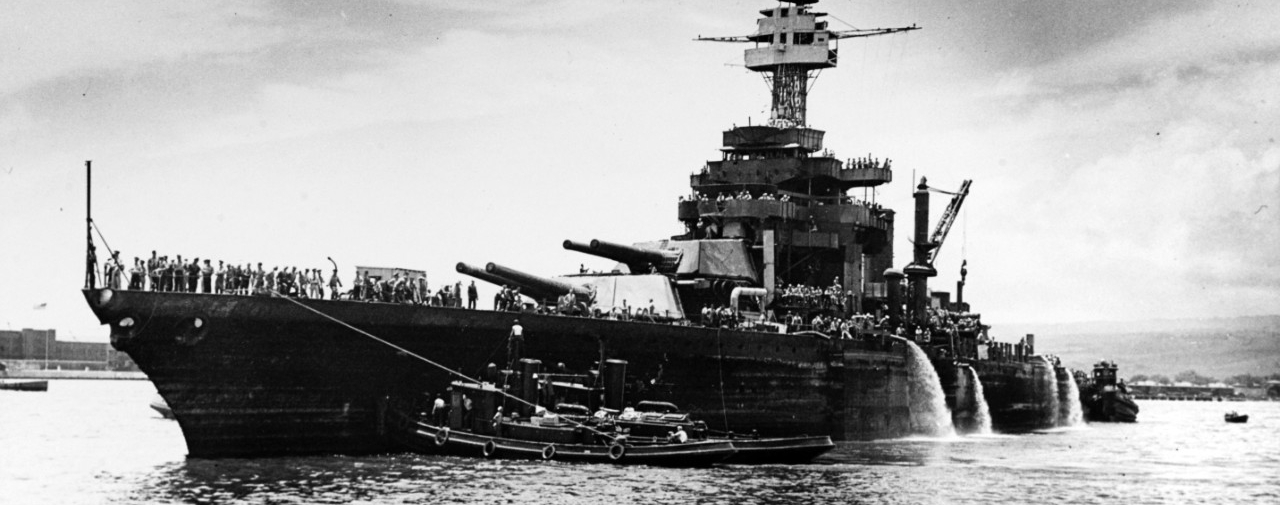
Post-Attack Ship Salvage
During the weeks following the Japanese raid, a great deal of repair work was done by the Pearl Harbor Navy Yard, assisted by tenders and ships' crewmen. These efforts, lasting into February 1942, put the battleships Pennsylvania, Maryland, and Tennessee; cruisers Honolulu, Helena, and Raleigh; destroyers Helm and Shaw, seaplane tender Curtiss, repair ship Vestal and the floating drydock YFD-2 back into service, or at least got them ready to steam to the mainland for final repairs. The most seriously damaged of these ships, Raleigh and Shaw, were returned to active duty by mid-1942.
Five more battleships, two destroyers, a target ship and a minelayer were sunk, or so severely damaged as to represent nearly total losses. These required much more extensive work just to get them to a point where repairs could begin. Starting in December 1941 and continuing into February 1942, the Navy Yard stripped the destroyers Cassin and Downes of servicible weapons, machinery and equipment. This materiel was sent to California, where it was installed in new hulls. These two ships came back into the fleet in late 1943 and early 1944.
To work on the remaining seven ships, all of them sunk, a salvage organization was formally established a week after the raid to begin what would clearly be a huge job. Commanded from early January 1942 by Captain Homer N. Wallin, previously a member of the Battle Force Staff, this Salvage Division labored hard and productively for over two years to refloat five ships and remove weapons and equipment from the other two. Among its accomplishments were the refloating of the battleships Nevada in February 1942, California in March, and West Virginia in June, plus the minelayer Oglala during April-July 1942. After extensive shipyard repairs, these four ships were placed back in the active fleet in time to help defeat Japan. The Salvage Division also righted and refloated the capsized battleship Oklahoma, partially righted the capsized target ship Utah and recovered materiel from the wreck of the battleship Arizona. However, these three ships were not returned to service, and the hulls of the last two remain in Pearl Harbor to this day.
All this represented one of history's greatest salvage jobs. Seeing it to completion required that Navy and civilian divers spend about 20,000 hours underwater in about 5000 dives. Long and exhausting efforts were expended in recovering human remains, documents, ammunition and other items from the oil-fouled interiors of ships that had been under water for months. Uncounted hours went into cleaning the ships and otherwise getting them ready for shipyard repair. Much of this work had to be carried out in gas masks, to guard against the ever-present risk of toxic gasses, and nearly all of it was extremely dirty.


